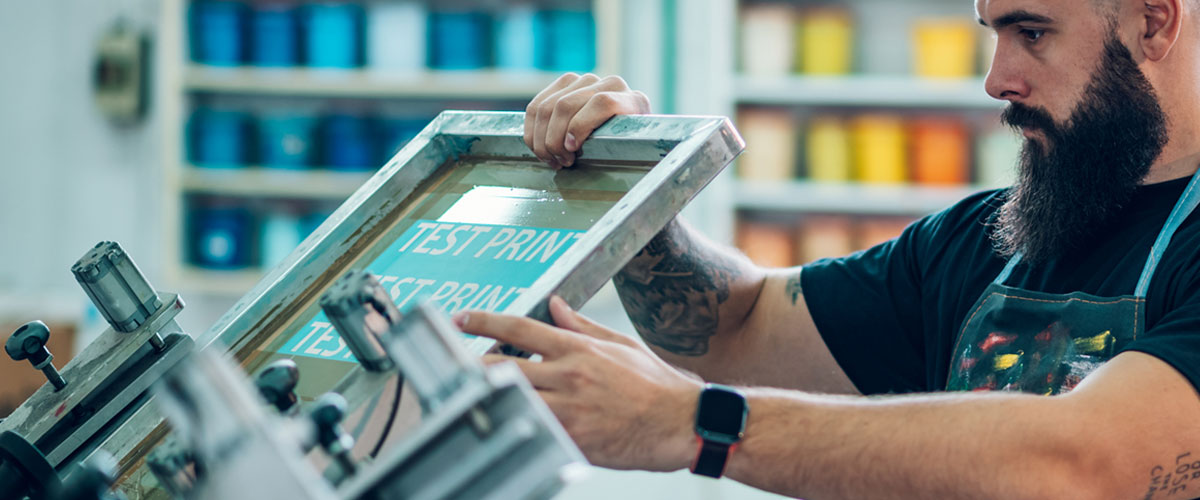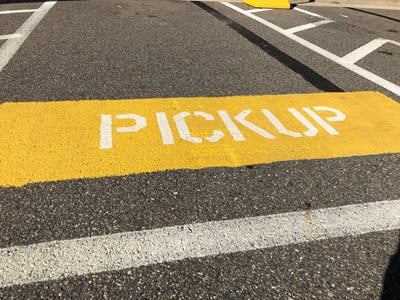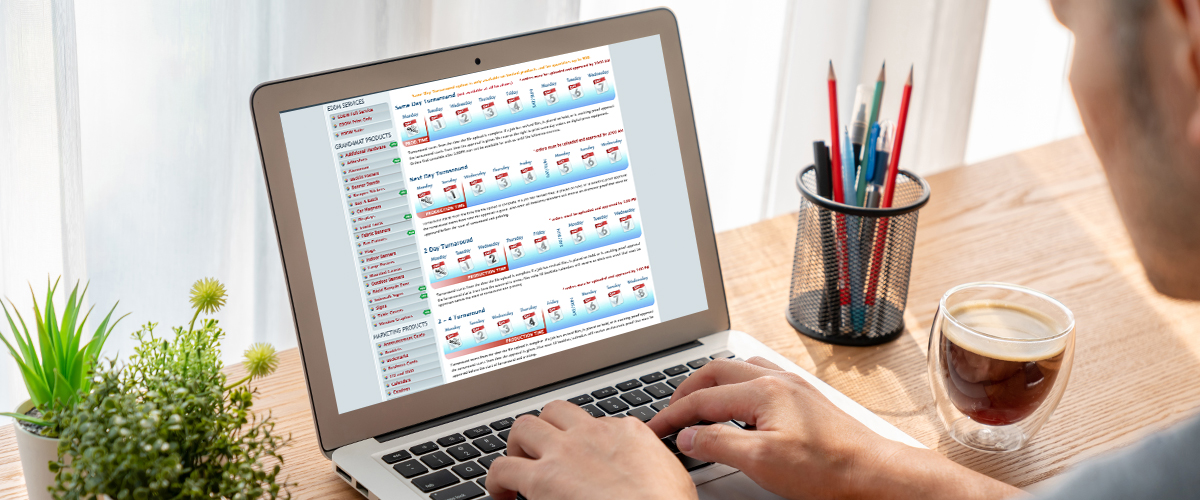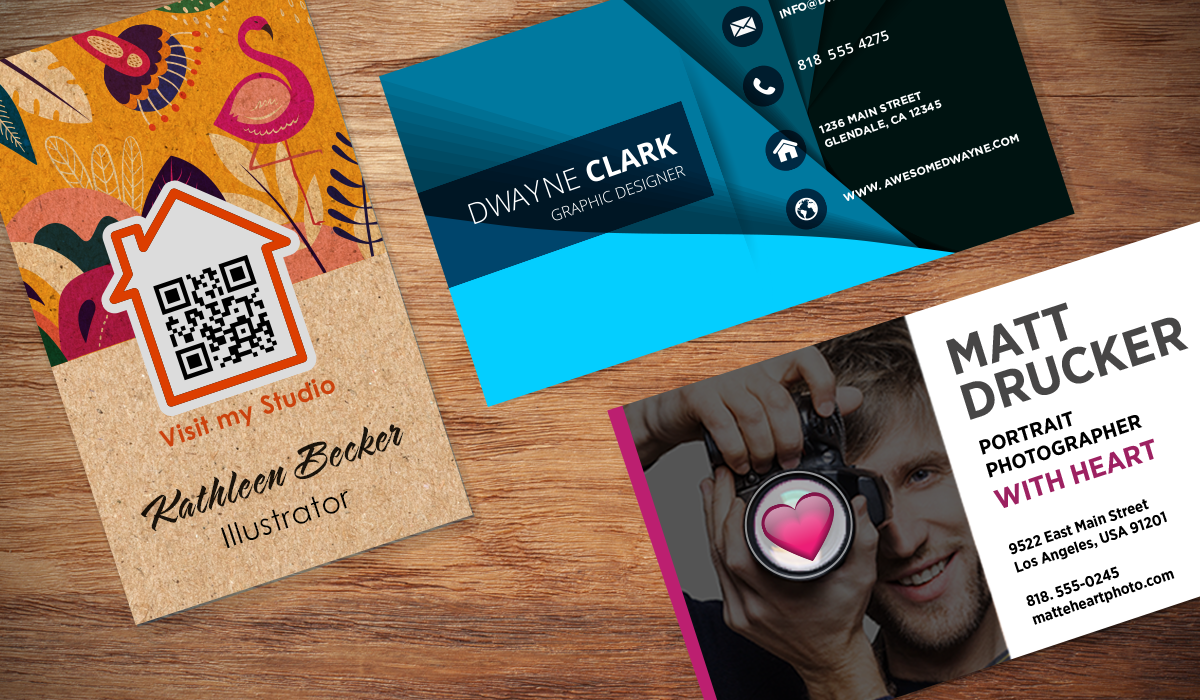Screen printing is one of the core printing methods thought to have originated centuries ago in Asia to print on silk. You might hear it called silk screening. Today the screen material is most commonly polyester fabric or paper. Once a design is created, it is printed on a film to create a stencil for each color needed for the print.
Screen Printing Components
The screen printing process involves six main components:
- The frame
- Stretched screen material
- A photo emulsion
- The image area
- Ink
- A squeegee
Frame
Typically made from aluminum, the frame holds the screen taut to produce a detailed printed image.
Stretched Screen
A mesh material, typically polyester, is stretched to fit tightly within the frame.
Photo-emulsion
a layer of emulsion is applied to the screen after exposure; the areas that wash away are the printed area, while the remaining emulsion layer blocks ink from getting through the screen.
Image area
The exposed area of the photo emulsion that is washed away and will receive ink.
Ink
Many types of ink can be used in screen printing, making it suitable for printing on many different materials, from paper and plastics to textiles and garments.
Squeegee
Using pressure, the squeegee pushes the ink from the frame side (top) through the screen onto the material. Squeegees come in different hardness levels, measured in durometers, depending on the material being printed.
The Screen Printing Process
To create a screen print, the frame is mounted onto a flatbed or carousel press. Ink is pressed through the prepared and imaged screen to the material below using the squeegee.. Printing can be fully manual, semi-automated, or fully automated where pneumatic pressure or electric motors work the squeegee and assist in loading and unloading the material.
Screen Printing Colors
Screen printing can apply one or multiple colors and is compatible with 4-color process printing, using multiple screens to produce quality images. Applications like signs and t-shirts are often printed with one or two colors but can use even more based on the design. The two additional design considerations are related to the halftone mesh screens used in the process, in addition to fine lines and text. Designers should opt for thicker lines and larger font sizes due to the physical limitations of the screen mesh, which makes it harder to hold small dot sizes. The same limitation applies to halftone images (photos) which can typically be reproduced from 40-75% unless opting for a higher mesh count on the screen.
Other Considerations
Other production considerations are mostly related to the mesh screen and the angles to place each color separation when printing four or more colors. Fortunately, this is not a concern for your client but a part of the production steps managed by 4over.
Coroplast
Coroplast is best described as plastic cardboard where layers of polypropylene are layered to make a fluted, cardboard-like material. Screen printing on coroplast allows a thick layer of ink to be applied with great adhesion strength, resulting in a highly durable image. These characteristics provide many benefits when screen printing coroplast signs. The inks used to screen print, much like the coroplast, hold up exceptionally well to environmental conditions like sun, heat, and moisture. These signs can be used and reused over an extended period and still look brand new.
Click here to see the new options available for screen-printed coroplast signage that is perfect for many outdoor uses, from events to real estate.



